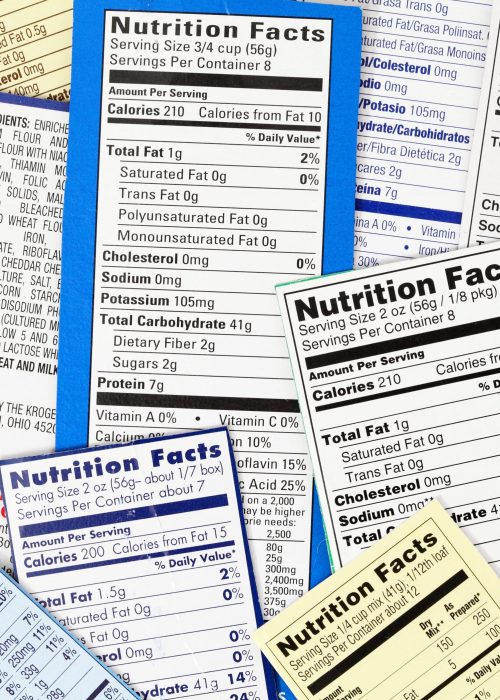Articles on Polyols
Learning to live a healthier lifestyle is easy when you change one small thing at a time. Learn and find tips to start the change today!
Learn moreLactitol is a bulk sweetener with a sugar-like taste. Its stability, solubility and reduced calories make it suitable for a variety of low-calorie, low-fat and/or sugar-free foods. Its mild sweet taste makes it ideal for use with low calorie sweeteners.
Lactitol was discovered in 1920 and it was first used in foods in the 1980’s. Lactitol is a disaccharide polyol (sugar alcohol), derived from lactose. As being a unique bulk sweetener with very similar technical and handling properties to those of sucrose, lactitol is very suitable to replace sucrose on a 1 : 1 basis in calorie-controlled foods.

Lactitol is an odorless white crystalline powder with very high purity and good flowability. The sweetening power of lactitol is only 40% of that of sucrose. Due to the mild sweetness of lactitol, it is an ideal bulk sweetener to combine with low-calorie sweeteners commonly used in today’s low-calorie, sugar-free foods (e.g. acesulfame potassium, aspartame, cyclamate, neotame, saccharin, stevia sweeteners and sucralose). Additionally, its mild sweet taste allows other flavors to be clearly perceived. The relative sweetness of lactitol rises as its concentration in a food is increased.
Lactitol is not hygroscopic, meaning it will not absorb moisture into products. It will maintain crispness and extend the shelf life of cookies and chewing gum. In chocolate, where a cooling effect is undesirable, lactitol is highly useful due to its very small cooling effect. Compared to sucrose, lactitol has reasonably good solubility. This can help minimize modifications to the process, making substituting sucrose very easy. Lactitol can be dissolved at lower temperatures than sucrose, and thereby save on energy and processing costs. In acid and alkaline conditions, lactitol is stable and it also remains stable under the high temperatures of food processing.
Lactitol’s unique attributes make it a versatile reduced-calorie sweetener for a wide variety of food applications. Due to its stability, solubility and similar taste to sucrose, lactitol can be used in a variety of low-calorie, low-fat and/or sugar-free foods such as ice cream, chocolate, hard and soft candies, baked goods, sugar-reduced preserves, chewing gums and sugar substitutes. As versatile ingredient lactitol can also be applied in certain pharmaceutical applications, in food for diabetics or as cryoprotectant in surimi, or as prebiotic in cultured dairy foods.
Low in Calories – Lactitol is not metabolized like a typical carbohydrate. Unlike the metabolism of lactose, lactitol is not hydrolyzed by lactase. It is neither hydrolyzed nor absorbed in the small intestine. Lactitol is metabolized by bacteria in the large intestine, where it is converted into biomass, organic acids, carbon dioxide and a small amount of hydrogen. The organic acids are further metabolized resulting in a caloric contribution of 2 calories per gram (carbohydrates generally have about 4 calories per gram). The FDA has accepted this caloric value for labeling purposes in the U.S. The EU Nutrition Labeling Directive states that polyols, including lactitol, have a caloric value of 2.4 calories per gram.
Low Glycemic and Insulinemic Response – As a sweetening ingredient, lactitol has a low glycemic index and does not induce an increase in blood glucose or insulin levels after consumption. Control of blood glucose, lipids and weight are the three major goals in diabetes management today. Not just people with diabetes can use low GI foods comprising lactitol to replace sugar to give them a wider variety of low-calorie and sugar-free choices in their diabetic diet. Consuming low GI foods could also provide health benefits to people who are health conscious. However, people should understand that foods sweetened with lactitol contain other ingredients that contribute calories and other nutrients. These must be considered in meal planning.
Improving Gut Health – Since lactitol can pass the upper gastrointestinal tract without being hydrolyzed and absorbed, it is capable of promoting the growth of beneficial bacteria in the colon such as Bifidobacteria and Lactobacilli. The intestinal bacteria ferment lactitol, resulting in the establishment of an acidic environment in the colon due to the formation of short chain fatty acids. At these acidic conditions, the beneficial bacteria, better known as probiotics, grow in preference over disease causing organisms or pathogens. As excellent prebiotic ingredient, lactitol can help to keep your colonic microflora healthy.
Does Not Cause Dental Caries – Lactitol is not metabolized by oral bacteria, which break down sugars and starches to release acids that may lead to cavities or erode tooth enamel. As tooth-friendly ingredient, lactitol does not cause dental caries. The American Dental Association has recognized the usefulness of polyols, including lactitol, as alternatives to sugars and as part of a comprehensive program including proper dental hygiene. The FDA has approved the use of a “does not promote tooth decay” health claim in labeling for sugar-free foods that contain polyols, including lactitol. Polyol sweetener products may be labeled safe for teeth in other parts of the world.
In the United States, a GRAS (Generally Recognized As Safe) affirmation petition submitted by PURAC BIOCHEM has been accepted for filing by the Food and Drug Administration (FDA). This allows food manufacturers to produce and sell foods with lactitol in the United States. Internationally, it is approved for use in many countries, including the European Union (EU), Canada, Japan, Israel and Switzerland.
Numerous animal and human studies have substantiated the safety of lactitol as a food additive. Safety studies in experimental animals include long-term feeding studies at high dietary levels for 2 1/2 years in rats and for 2 years in mice.
Several international authoritative bodies have reviewed the safety research on lactitol. In April 1983, the World Health Organization’s Joint Expert Committee on Food Additives (JECFA) reviewed the scientific data on lactitol and allocated an Acceptable Daily Intake (ADI) of “not specified” to lactitol. JECFA’s decisions are often adopted by many small countries, which do not have their own agencies to review food additive safety. In 1984, the Scientific Committee on Food of the European Union evaluated lactitol and stated that consumption of 20 grams per day of polyols, including lactitol, is unlikely to cause undesirable laxative effects. The Committee allocated lactitol an ADI “not specified.” ADI, expressed in terms of body weight, is the amount of a food additive that can be consumed daily over a lifetime without risk. An ADI “not specified” is the safest category in which JECFA can place a food additive.
Lactitol is a versatile ingredient that allows food manufacturers to develop new foods that both taste good and are lower in calories, fat and/or sugar. Lactitol’s qualities as a bulk sweetener make it optimal to blend with low-calorie sweeteners that are several hundred times sweeter than sucrose (but do not provide the necessary volume). Lactitol can also be used with other bulk sweeteners or polyols. Blending two or more polyols gives food manufacturers the flexibility to take advantage of each sweetener’s individual attributes. Lactitol offers food manufacturers the beneficial characteristics of mild sweetness, stability, solubility, bulk and reduced calories.
Sugar replacers (polyols) generally do not lose their sweetness when they are heated and can be used to flavor hot beverages and in foods that are heated when processed or cooked. However, unlike sugar, they do not usually give a crisp brown surface to foods which are baked. The non-browning property is an advantage for products for which a change in color is not desired.

Learning to live a healthier lifestyle is easy when you change one small thing at a time. Learn and find tips to start the change today!
Learn moreWe’ve got the answers to your frequently asked questions about polyols.
Learn moreThese unique sweeteners taste like sugar but have special advantages.
Learn more